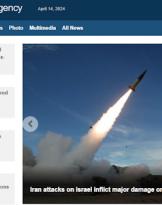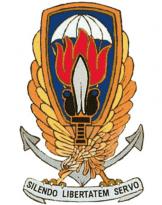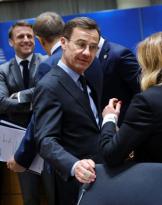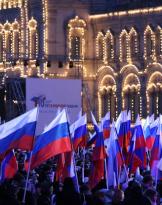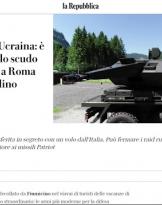Soon the White Paper of Defense should be made official, for now preceded by guidelines published online, very hermetic and presented using a complex language, understandable only to a modest circle of ?? professionals?
In the past, the use of the conditional was mandatory in the drafting of the official documents of the various MS, a prerogative that gave ample room for interpretation and the possibility of reshaping ?? without damage ?? positions and ratings. In drafting the Guidelines, however, this tradition has lapsed, replaced by a different verbal mode, only present and future. A convoluted text and therefore prey to any interpretation that can be retracted at any time. A better result than the ?? gerund tradition ?? it would have allowed and destined to leave little room for possible shared solutions, but postponing the final decision to a few.
A text whose drafting, with good certainty, was not entrusted to an articulated Working Group composed of military and technicians of the sector, integrated by consolidated professionalism of civil society and which also highlights the lack of thought support of the military representation, the COCER (v. article).
A confirmation of the desire to manage the problem only on a political level, relegating the technicians of the sector to mere passive executors. An absolutely different approach from that followed by almost all the major Western countries committed to reorganizing a military instrument that in the future will be destined to combine the economic situation with the need to reliably face the new global threats that are on the horizon. .
A 'hermeticity of language that does not even explicitly and unequivocally what will be the job prospects of citizens who decide to enlist. A serious deficiency that if confirmed in the final text would induce disaffection for the FFAA, penalizing heavily the enlistments.
Who would choose, in fact, to do the military with the prospect of abruptly terminating the employment relationship without the state guaranteeing anything in terms of work?
A doubt induced by an important passage of the Guidelines of a document that should tell us what our FFAA will be like in the next fifteen years, when we refer to the need to have young Armed Forces.
Maybe you think of a type of service as happens in many European countries, for example with a twenty-year stop?
A shared principle that takes into account the peculiarity of military status but which at the same time lacks a fundamental clarification. What will we do to our military after twenty years of service?
Will they be willing to recognize the peculiarity of the status as happens in many European countries by relocating staff to other public positions or will they simply be placed on leave?
In truth we would have expected, therefore, to read more linear guidelines, less hermetic in content, more concrete in the analysis of the political-strategic scenario and more explicit on the way in which we intend to interact with the international realities of which Italy does part. Only a nuanced and generalized mention of the duties resulting from membership of NATO, no precise reference to the United Nations, little, and in any case nothing concrete, to the European Union.
Nor does one read the will to address important issues, such as that of a desirable amendment to the Constitution that allows the Supreme Defense Council to also operate as a Security Council, to the full advantage of national security if threatened by internal subversion or terrorism , a solution already in place in many European countries.
No mention even on the opportunity to provide for a Reserve / National Guard deployed on the territory on an areal basis, ready and trained to be used even outside the area in stabilization interventions with ?? low value ?? and on the national territory also and above all in the event of public calamities. Instead, reference is made to the intention to prepare the new FFAAs for close coordination with diplomatic personnel and other departments, but also with international organizations, governmental and non-governmental.
A declaration of intent, this last one, which - due to the specific previous experience of the writer - could be doomed to fail as it is declared unilaterally in a document whose drafting does not mean that the representatives of the realities with which it is written have provided thought support. calls for coordination. A completely different choice from those adopted by other countries such as France, Germany, Great Britain and the USA.
Instead, we read that probably the entire White Paper will be elaborated by developing a theorem based on abstruse mathematical acronyms (?? I ?? and ?? E ??, raised to the third power): ?? Interforces, International, Interoperable ?? and that it is ?? Effective, Efficient and Economical ??. These parameters are inconsistent with each other since international positioning and interoperability do not combine with cost-effectiveness and efficiency. Moreover, nothing is said about the training reorganization that should lead to achieving such an objective through an updated and multidisciplinary training, certainly expensive but essential in terms of cost / effectiveness. Nor, then, a reference to the need for training and development in the field of the capacity of a "cyber defense", autonomous in the production of security systems and which increases the reliability of the information systems of the State and large operators.
Almost certainly an elaboration entrusted to a restricted circle of ?? thinkers ?? also giving little space to the Staff of the Armed Forces, following a very different working method from that applied in the major European countries. In France, for example, for the drafting of the Defense White Paper launched in 2013 to create a defense model valid until 2025, a Commission was established consisting of 3 deputies (President of the Defense Commission and two members of the same) and 3 senators (President and two vice-presidents of the Foreign Commission), responsible for the administrations of Defense, Foreign Affairs, Economy and Finance, Productive Development, Interior, Research, as well as numerous qualified personalities from the scientific world (such as the Director of EDA French counterpart of the CNR), the University, Councilors of State and the Court of Auditors. In addition, a representative from Germany and one from the United Kingdom also took part, to underline the opening of the works to a full European and international dimension.
The French Commission in charge of drafting the White Paper has developed the work by establishing thematic working groups, such as: strategic context, framework for action and policy objectives, national security, information, strategy of engagement and coherence of systems of force, technology and industry , defense economics, defense men and women and national security
In addition, the French Ministry of Defense has given a broad voice to its staff by opening a site dedicated to reflection on the White Paper on the Intranet (Intradef), allowing civil and military personnel of the Defense (including the Gendarmerie) to follow the proceedings and express opinions. , even under a pseudonym. Contributions of thought, especially in the field of human resources, collected and delivered to the Commission which incorporated them and included them in the White Paper.
Reading the Guidelines of the White Paper of the Italian Defense does not emerge, however, such a broad competition of thought. Rather, one gets the impression that the desirable clot of expertise of the various leading players in the sector has been missing, replaced by the statement of intentions, attributable to a group of ?? enlightened intelligences ?? not for specific experience, but for an institutional position held.
A relevant doubt induced above all by the absence of references on how it intends to revitalize the military training apparatus and how it intends to manage the role of a future military representation. A COCER of tomorrow which by now in all the FFAAs of advanced democracies constitutes a real union representation.
Many, therefore, the ?? black holes ?? in the hermeticity of the Guidelines. In particular, as previously mentioned in the training sector and in that of military representation. As far as the training aspect is concerned, little is said and in all probability little space will be found in the final draft of the text. We are only talking about ?? the human element that is and will remain central in every potentially identifiable solution in order to make the value and operational model that will be defined fully effective. It seems unavoidable to question the coherence, relevance and cost-effectiveness of the current training approach ?? . Hermetic concepts that say little or nothing.
Nothing is specified on the right of the military to have union representation, disregarding an important aspect of the future reorganization of the FFAA of the future, destined to have an active role in a modern democracy. All this despite the fact that trade union rights represent a constitutional legitimacy also for the military and despite the rulings of the European Court of Human Rights which deposited two judgments affirming in both the violation of Article 11 of the European Convention on Human Rights from part of the states that prohibit the establishment of trade unions or professional associations among the military.
A right sanctioned since 1981 by the Convention relating to the protection of the right to organize and to the procedures for determining the employment of the Civil Service which entered into force on 25/02/1981, (ILO Convention C151 / 78), which all? Article 1 reads verbatim: ?? This convention applies to all persons employed by public authorities, to the extent that more favorable provisions contained in other international labor conventions are not applied to them ?? - and he points out - ?? national legislation will determine the extent to which the guarantees provided for in this convention will apply to the military and police forces ??.
If this kind of well-regulated social dialogue works in Denmark, Sweden, the Netherlands, Germany and many other countries, it is not clear why it should not be possible in Italy as well. Moreover, the President of Euromil, the organization that represents military unions and associations in Europe, recently explicitly stated that Italy should provide for unions for the military not because "Europe wants it", but because Italy respects international legislation!
Just a mention of the problem of “military peculiarity”, but zero on how it can be guaranteed in the absence of trade union representatives with real union connotations. The problem is faced, however, with a circumlocution of words that clarify nothing when it comes to ?? protection and enhancement and the human and social constraints that the same (military peculiarity) underlies ??.
Rather, article 68 of the Guidelines expresses an archaic concept where it treats the recognition of military peculiarity with a phrase that it is not risky to define sibylline: ?? recognizing in this condition a difference so marked from the public service to overcome the relationship of genus and species which until now has influenced both domains ??. A declaration of principles that suggests the intention of the absolute exclusion of the possibility of the establishment of a military union that guarantees dignity and morals to our personnel. Instead, we preferred to return to an archaic concept, that of "overcoming the relationship of genus and species" which sends the FFAA back at least 20-30 years, suggesting that everything will be updated with top-down decisions without coordinating with a representative which represents the vital element of any military apparatus: human resources.
A right that at least 23 Nations recognize to their FFAA and that leave once again the Italian ones at the stake? in spite of the fact that more and more they will be destined to cooperate with realities that foresee in their sphere the existence of organisms with the task of protecting the dignity of the personnel.
A document that once again underlines the desire to rewrite the organization of the defense / security system of the country by entrusting it mainly to the thinking of political realities, excluding the reflection of other national objects to which it is referred to as possible components of the network of the future and, above all, excluding the involvement of COCER which represents the reality of our FFAA in barracks, airports and ships.
A hope: once the White Paper is assigned to Parliament's evaluation, it is hoped that these dichotomies will emerge and that at least the consultative opinion of those who, based on the experience acquired, will be able to provide constructive thought support on training needs of our FFAAs and of those who, as an active part of the COCER, experience the problems and inconveniences of operational colleagues on a daily basis.
An integrative work absolutely necessary, if you want to avoid that once again our FFAA are ?? different ?? from those of other countries with which they will surely be called to operate in an emergency.
Fernando Termentini
(photo: Ministry of Defense archive)
We also remember "The white book of defense of the Mini Pony country"


